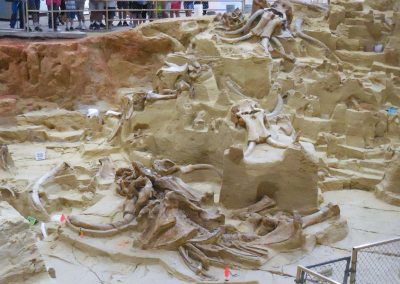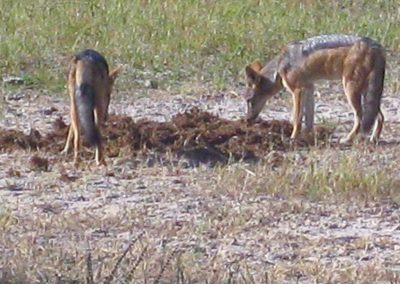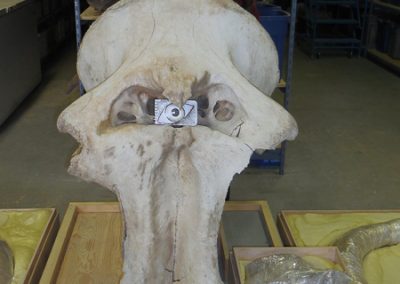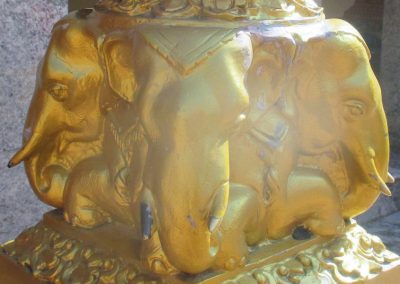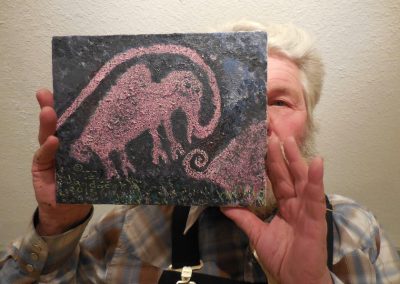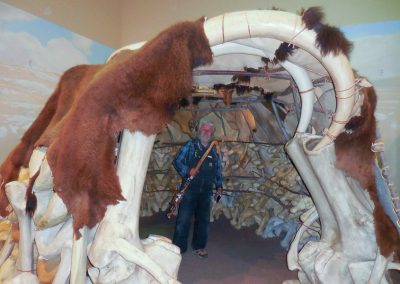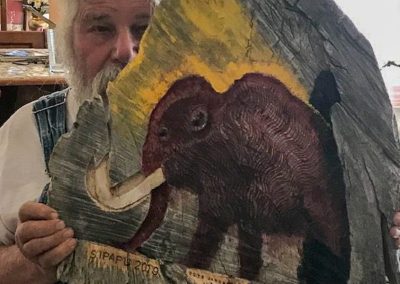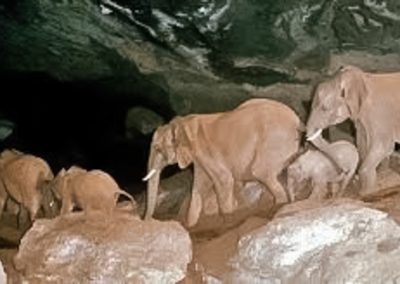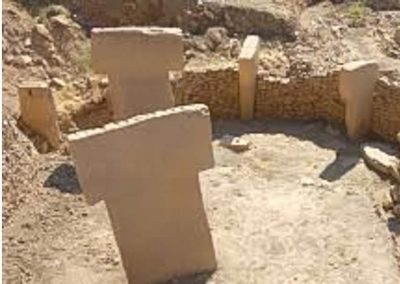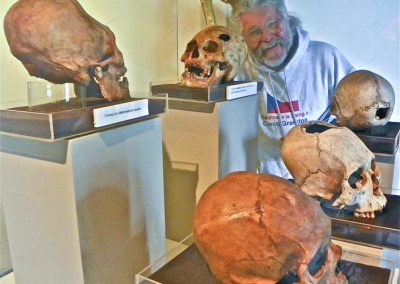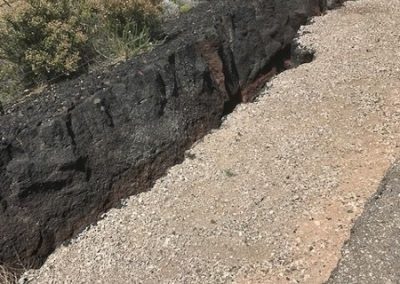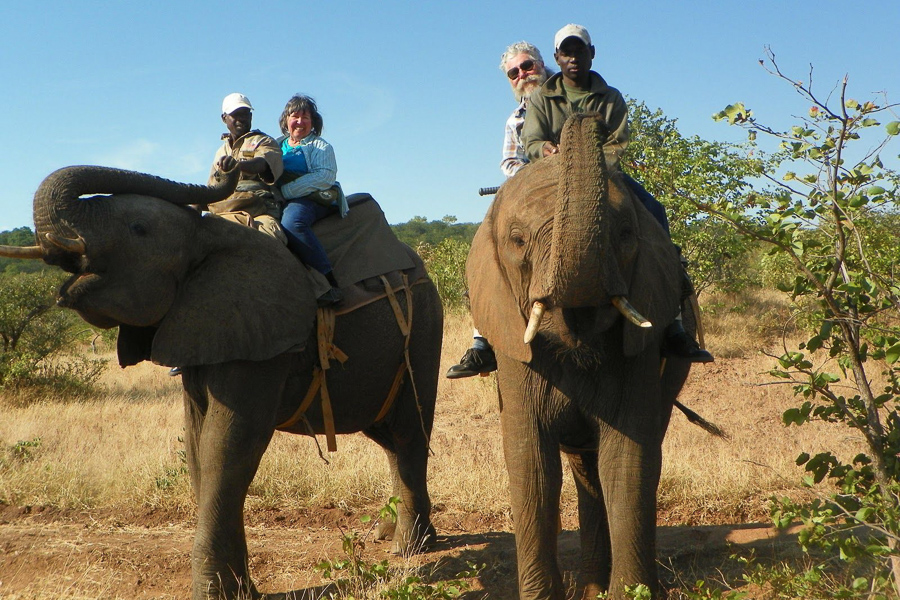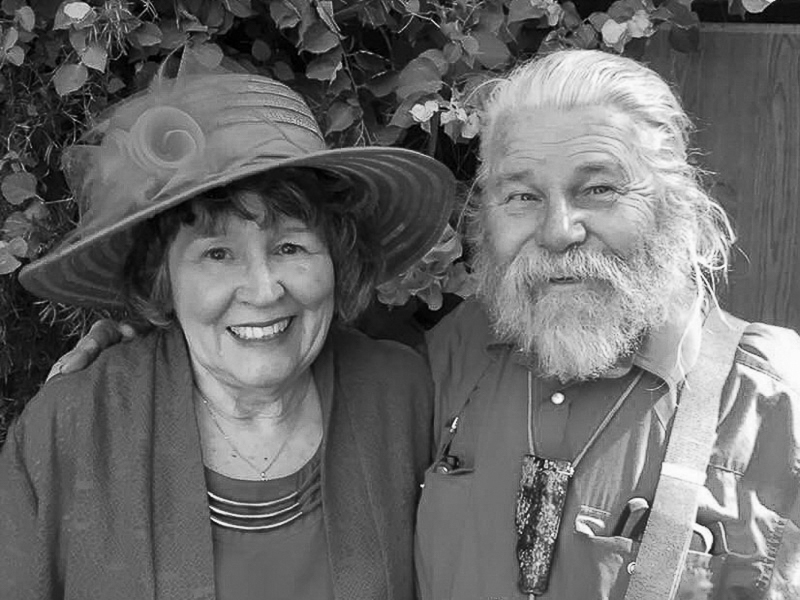
Mammoth Whisperer
Maria Martinez and others distinguished San Ildefonso Pueblo as traditionally being the home of black-on-black pottery. Perhaps in the 21st century San Ildefonso Pueblo may be defined as the “mammoth-mole community”, creating art, literature, and other cultural resurrections to celebrate this branch of their history. Given the great strides in genetic research that continue to occur, it’s quite likely that within the next few years the news will report on the successful cloning of mammoths and San Ildefonso Pueblo can rejoice in the event as their very own.
Recently with my good Slovenian friend, Professor Anton Perdih, I wrote yet another paper about mammoths. I thank Professor Perdih for doing the heavy lifting to integrate my linguistic study alongside his matches of haplogroups. During the process of gathering data about mammoths I incidentally acquired a significant collection of information about elephants. This was due in part to the opinion that mammoths are widely regarded in peer reviews as not qualifying as “science” or indeed worthy of being included in a “scientific paper”. In anticipation of resurrected mammoth, or at least a mammoth created partially with elephant genes, becoming a reality by the 2020s, I wish to share the following book for people who are afflicted with the exclusion of this research from scientific study which I have deemed “a mammoth imbecility”.
My research into elephants began as I was riding on an African elephant and I asked the mahout about his word for “elephant”. His response sounded very much like the Czech equivalent. However I later realized I heard wrong, but it started my study of the many words for “elephant” all across Eurasia.
To elaborate upon the information that I have procured in my own research, here are some extra interesting facts about elephants and, by extension, about mammoths. First, elephants grow all of their lives. A seventeen year old elephant and a seventy year old elephant, while both are mature adults, will vary in size; the latter being significantly larger than the former. Second, unlike humans who develop cancers over their lives, elephant cells do not deteriorate into cancer. This would of course be a fantastic field of study to research for a better understanding of how the cells maintain themselves. A similarly notable discovery was found in the sinkhole located within the hot springs of South Dakota.
The sinkhole in question containing at least 60 mammoths, all of which were males. This is because the matriarch at that time kept the herd away from the inviting grass located on the edge of the two acre pond that formed a sort of warm bath. However, as the males of the herd matured, they were cast out of the herd. Prone to ignore the motherly advice, they became trapped and drown in the sinkhole.
Similar to bears, monkeys and apes, the breasts of an elephant are located in the upper chest area while many other mammals have udders between their back legs or multiple milk ducts on their abdomen. Herd animals, including cattle, horses, sheep, goats, and elephants are prone to take commands from humans in the absence of a herd leader and, in fact, pack leaders of canines are often humans.
On a less enticing note, elephant dung is a source of food for many creates in Africa. As elephants do not digest most of the nutrients in their food, as much as half of the nutrients are recycled by other animals.
Returning to historical lore, there is a strong argument that every human society has stories about giants of elephant-like nature. Additionally the pronunciation of the word for elephant in a variety of cultures are strikingly similar. For instance, the names of elephant-like creatures often begin with a dental sound such as “s-“, “c-“, “ch-” or “z-” and often terminate with a nasal sound “-n” or “-ng”. A specific example of this comparison with the Chinese “sion g” and the Slovic “slon” or even the Celtic word for “nose” which is “sron”. Continuing that train of thought, the Ethiopian word for elephant is “zehon” and the Latvian word for elephant is “zilon is”. Those people who do not share the connection of a similar word for elephant often have mythology about giant ogres and ogresses with similar names and features of elephants.
Tsonoqua is an Native American ogress who sucks out brains and blood out of naughty or foolish children through their ear. The ogress also has sharp stones on the sides of her mouth. The similarities don’t end their either; like mammoths, she is captured in three a pit and when the ogress was cremated the smoke became a swarm of blood sucking mosquitoes.
While on the subject of the long snouted insects, Israelites in Egypt sometimes describe the insects of the fourth plague upon the Egyptians as elephantine monsters called “siloni” or “ silonit”.
Greeks and Australian Aborigines have mythologies about one-eyed ogres or Cyclops. Alternatively, Australian Papinijuwaris suck out life from their victims. However, placental animals were largely absent in Australia.
Giant Marsupials also had an opening in the skull which could easily be interpreted as a giant eye socket in the middle of the forehead. Hence the giant Papinijuwari has a cyclops-like single eye.
The ancient Slavs had a pagan deity by the name of Svantovit (spelled many ways). Svantovit conformed to the slon model with his four faces like elephant sculptures in the Orient and the słań part of his name. Stallo is a Scandinavian ogre who sucks out blood and life from victims with an iron pipe.
The Amerindian Stiff-legged BEAR is the size of an Elephant and has Pachyderm Skin which is arrow-proof. The Afrikaans word “grootslang” refers to a mythological South African animal which was part snake and part elephant. It was so horrible that the gods decided to split the creature into snakes and elephants. Such linguistic twists can suggest that the German word “schlange” and English word “snake” ultimately are derivations of the Slavic word “slon”. I have created many sketches to illustrate my study of mythology associated with elephants as helpful visualizations.
Four sided sculptures are often associated with Elephants in Eastern Asia. The icon of the Basques appears as four elephant heads joined at the tips of trunks. Bill Porter took a wonderful photo of a petroglyph of a mammoth near Belen New Mexico. He gave me permission to show it here. I, in turn, created a small painting of the same on canvas.
Switching tracks from linguistics and parallels in mythology to practical application, the bones and teeth of elephants and mammoths were often used to build igloo-like structures. Mammoths were hunted for a multitude of reasons including the processing of ivory and other dental material, along with pachyderm skins for roofing, fats for lighting, meat for smoking and salting, crafting of decorations for the living and the dead, as well as the processing of dung for mosquito repellent and fuel. Additionally mammoth hunters often dug pits to capture and butcher mammoths. The commerce based on mammoth products necessitated the formation of large human societies and networks of communities.
The fact that African and Asian elephants can cross breed even though they belong to different genera, not just different species, suggests that other members of the order Proboscideans could cross breed. For example Colombian mammoth & wooly mammoth and mastodons & mammoths. Female elephant heifers (virgins) have a virginal hymen. The Abrahamic religions (Judaism, Christianity and Islam) have great concerns about virginity.
When Louise and I went to do elephant research in South East Asia I created an elephant mask from an umbrella. With my arm I could move the trunk and scream “ZZZAAAAAN!” (The Mongol onomatopoeic word for elephant) Elephants viewed it with puzzlement. With my crazy antics it is little wonder that scientific journals do not want my research! During that trip, I also learned new words for elephant from the locals.
I began to write and publish papers on mammoths and elephants. In essence, they are dedicated to the proposition that from the time of mammoth hunters the word for mammoths & Elephants were similar across Eurasia; something akin to “SIONg” (Keep in mind that S, Z, K, G, CH are interchangeable as in Caesar, Kaiser, TZar, Císař, and Know & Gnostic. S and CH are interchangeable as in “Chinese is a Sino-Tibetan Language”)
| 1. Sámi | SLONN |
| 2. Latvian | ZILONIS |
| 3. Sorbian | SLON & Słon |
| 4. Czech | SLON |
| 5. Polish | SŁOŃ |
| 6. Slovak | SLOŃ |
| 7. Kalderaš | woroSLANO or SLONO |
| 8. Roma | SLONO |
| 9. Ukrainian | слон – Female = слониха |
| 10. Belarusian | слон – Female = сланіха |
| 11. Russian | слон – Female = слониха (SLONIKHA) |
| 12. Amerindian Mythological Elephantine Ogress
a. TSONOQUA, DZUNNUKWA, DZOO-NOO-QUA,
b. DZOONOKWA, TSUNOKWA c. DZONOKWA etc… d. as a Russified – tслониsquaw? (Sloní Squaw) |
|
| 13. Slovenian | SLON |
| 14. Croatian | SLON |
| 15. Bosnian | SLON |
| 16. Serbian | слон |
| 17. Macedonian | слон |
| 18. Bulgarian | слон |
| 19. Tocharian
a. onKALAM
b. onKOLMO may be from Slavic word for Elephant c. TUSK = KEL or OKEL |
|
| 20. Tibetan | GLAN |
| 21. Mongolian | ZAAN |
| 22. Chinese | sδaŋ |
| 23. South China | sδoŋ |
| 24. Thai | Čaŋ (CHANg) |
| 25. Laotian | Saŋ (SANg) |
| 26. Japanese | ZO (or ZOsan) |
| 27. Ethiopian | ZehON (ዝሆን) |
Nota Bene: (Additional points worth noticing) The Cambodian word for elephant is “DAMbRI” and the Lithuanian is “DRAMBLYS”. Korean word for ivory is “SANG-A”, similar to the Finnish equivalent “norSUNLuu”. In Hebrew, “SILONI” or “SILONIT” described elephant-like fourth plague upon Egypt.
In an oversimplified way it can be said that Carl Jung proposed that every person has a God shaped void in his or her being which each person tries to fill. For the Tewa and many others it starts with the shape of a digging mammoth.
Finally after all this research, I feel strongly that I should involve the local Tewa population in celebrating both their past and likely future involvement with mammoths as the historical Sipapu diggers. On the left, elephants digging tunnels/caves for salt.
Postscript: I trust that I have successfully presented my working hypothesis that people around the world have a “Jungian Void in the Shape of God” and that categorically this shape of God begins as a giant mammoth-like creature who digs and resurrects people into enlightenment. I also trust that I have successfully supported this hypothesis with about a dozen disciplines such as linguistics, mythology, arts and crafts, comparative anatomy, archaeology, elephant behavior, geology, comparative religions, iconography and similar thought experiments.
I hope to convince Renee and Leon Roybal of the San Ildefonso Pueblo that they and other Tewa artists and Storytellers should resurrect the Sipapu in the ancient meaning as a mammoth-like digger who brings the people into enLIGHTenment and sacrifices his own life. I would hope that like Edgar Lee Hewett who a hundred years ago helped Maria Poveka Martinez reestablish black-on-black pottery, I can help reestablish the true meaning of the Sipapu. I would hope that artists of the pueblo would use Los Alamos’ galleries and Historical Society to bring their culture to the world.
Architectural shapes like an elephant head appear in Chaco Canyon and Gibekli Tepe.
In Peru First Nations People shaped human skulls to approximate the shapes of elephant skulls.
Lava tubes near Grants New Mexico are a good example of diggers of Sipapu.
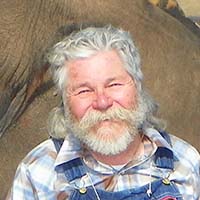
Petr Jandacek
(505) 672-9562
Petr Jandacek
Louise Jandacek
Mailing Address
127 La Senda Road
Los Alamos, New Mexico
USA
87544

